Building Recladding
Learning Objectives:
- Outline the characteristics that make many midcentury facades obsolete.
- Discuss recent construction and design-industry trends that are making building recladding a more attractive practice than it once was.
- Describe the recladding strategies for three commercial projects and explain how the new skins improved performance and marketability.
- Discuss how the three projects addressed budget, construction, and structural constraints.
Credits:
This course is approved as a Structured Course
This course can be self-reported to the AANB, as per their CE Guidelines
Approved for structured learning
Approved for Core Learning
This course can be self-reported to the NLAA
Course may qualify for Learning Hours with NWTAA
Course eligible for OAA Learning Hours
This course is approved as a core course
This course can be self-reported for Learning Units to the Architectural Institute of British Columbia
View course on architecturalrecord.com »
As commercial buildings of the mid-20th century dwindle in market appeal, it’s often their facades that are showing their age. Technical components fail; contemporary performance expectations outstrip what earlier materials and methods achieved; a change of program calls for a change of look; an aesthetic expression no longer appeals to the market. Meanwhile, the core structure typically remains sound, and the resources it embodies—energy and carbon emissions, money, labor—retain their value. For a growing number of buildings, recladding can help reap fresh value from structure and site, improve performance and marketability, and launch a whole new lease on life.
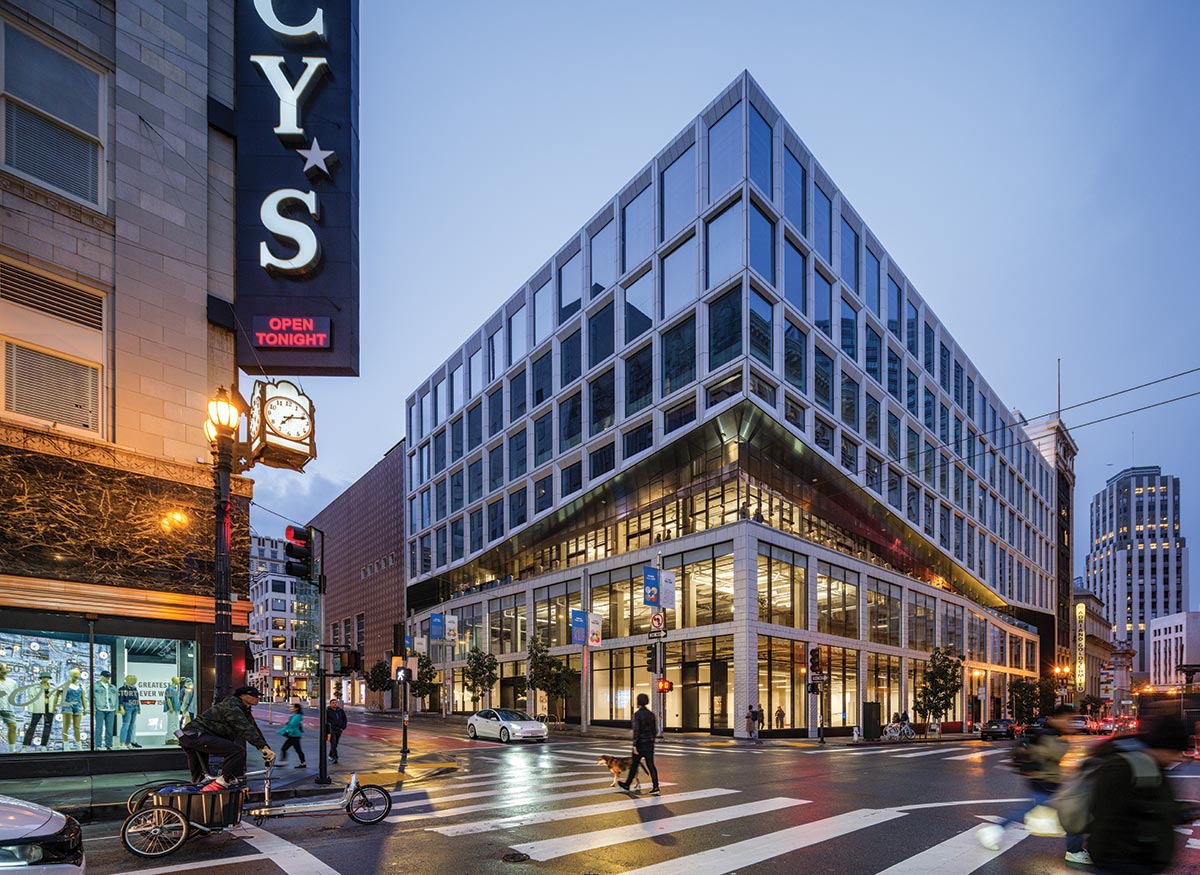
PHOTOGRAPHY: © JASON O’REAR
A nearly windowless San Francisco department store has been transformed by Gensler into a transparent multiuse building.
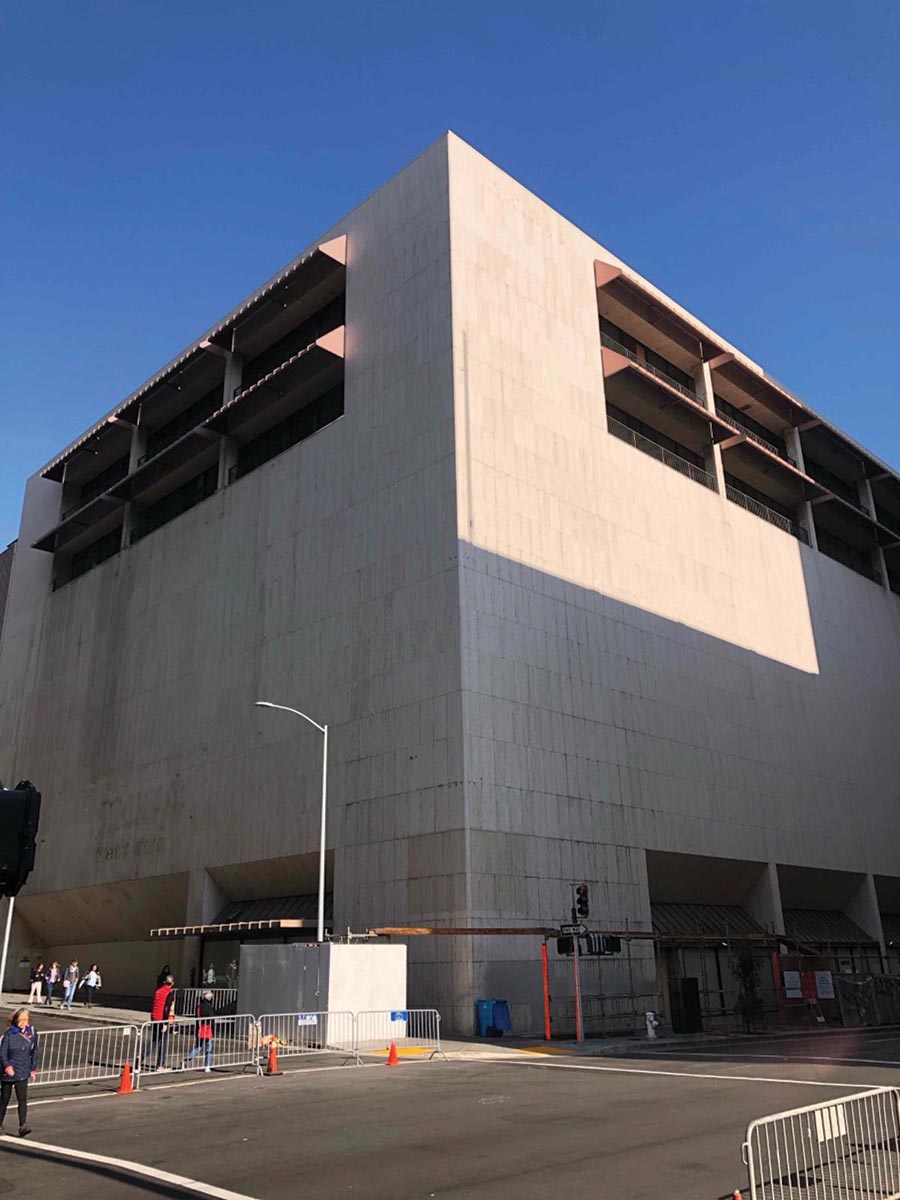
Photo courtesy of PLANT CONSTRUCTION
Recladding has long been a way to upgrade energy efficiency, save on structural material costs, and architecturally rebrand, says Will Babbington, principal with structural engineer and facade design firm Studio NYL, but the greater flexibility and fewer unknowns associated with new builds have typically tipped the balance in favor of new construction—until recently. “Now increased awareness (and verification) of energy performance and embodied carbon have led to these factors’—along with occupant comfort—becoming design drivers that compare in importance with cost and aesthetics,” Babbington says. “Combined with advances in methods to measure and manage designs towards these goals, the industry is seeing a significant increase in reclads and facade retrofits.”
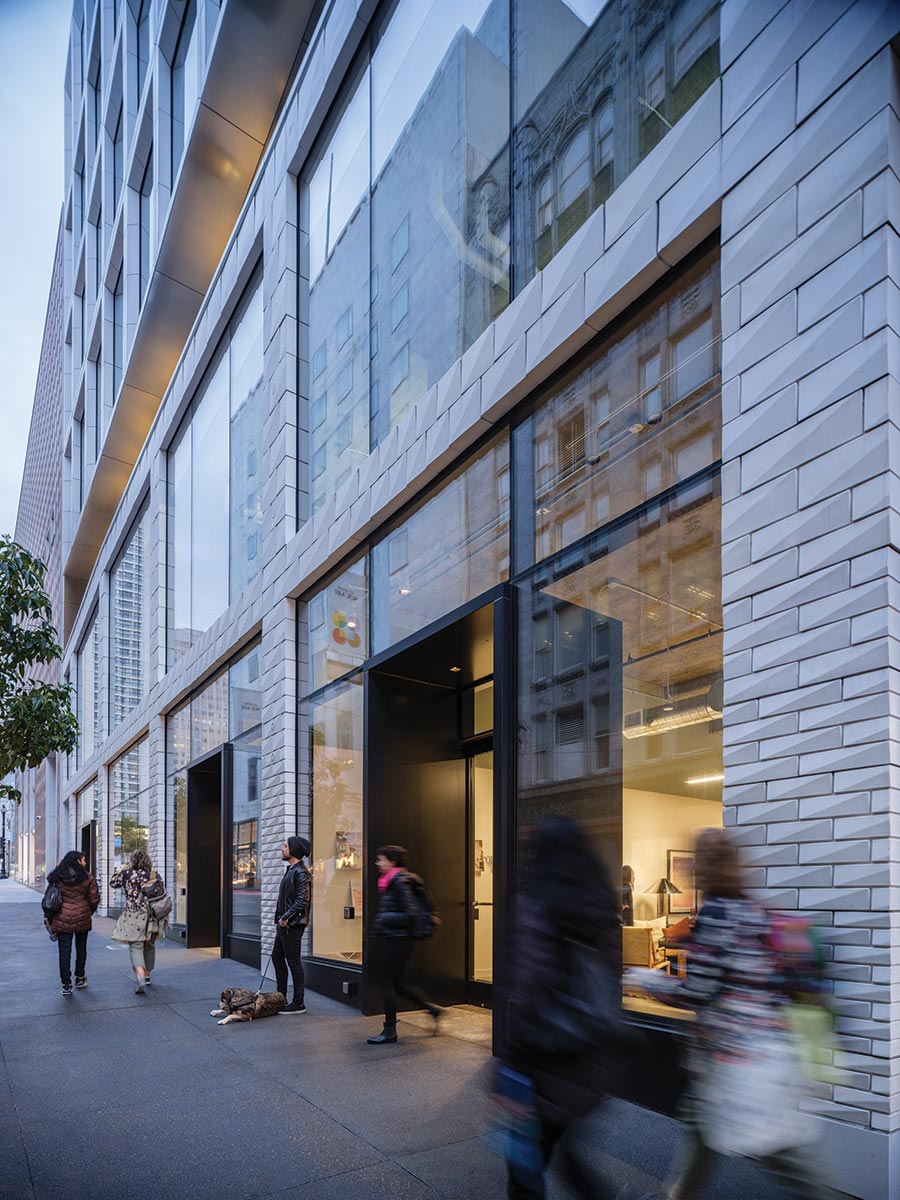
PHOTOGRAPHY: © JASON O’REAR
The base of 100 Stockton, in San Francisco, includes faceted terra-cotta tiles.
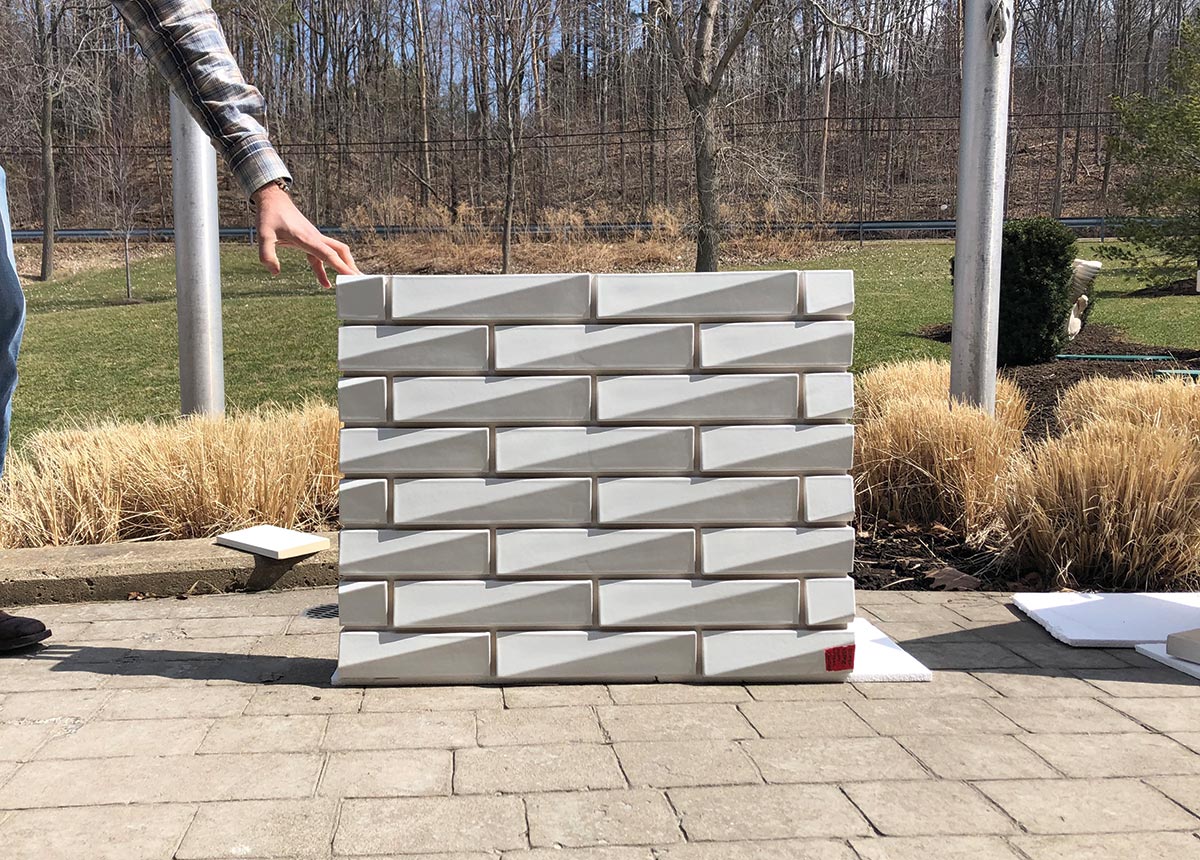
Photo courtesy of GENSLER
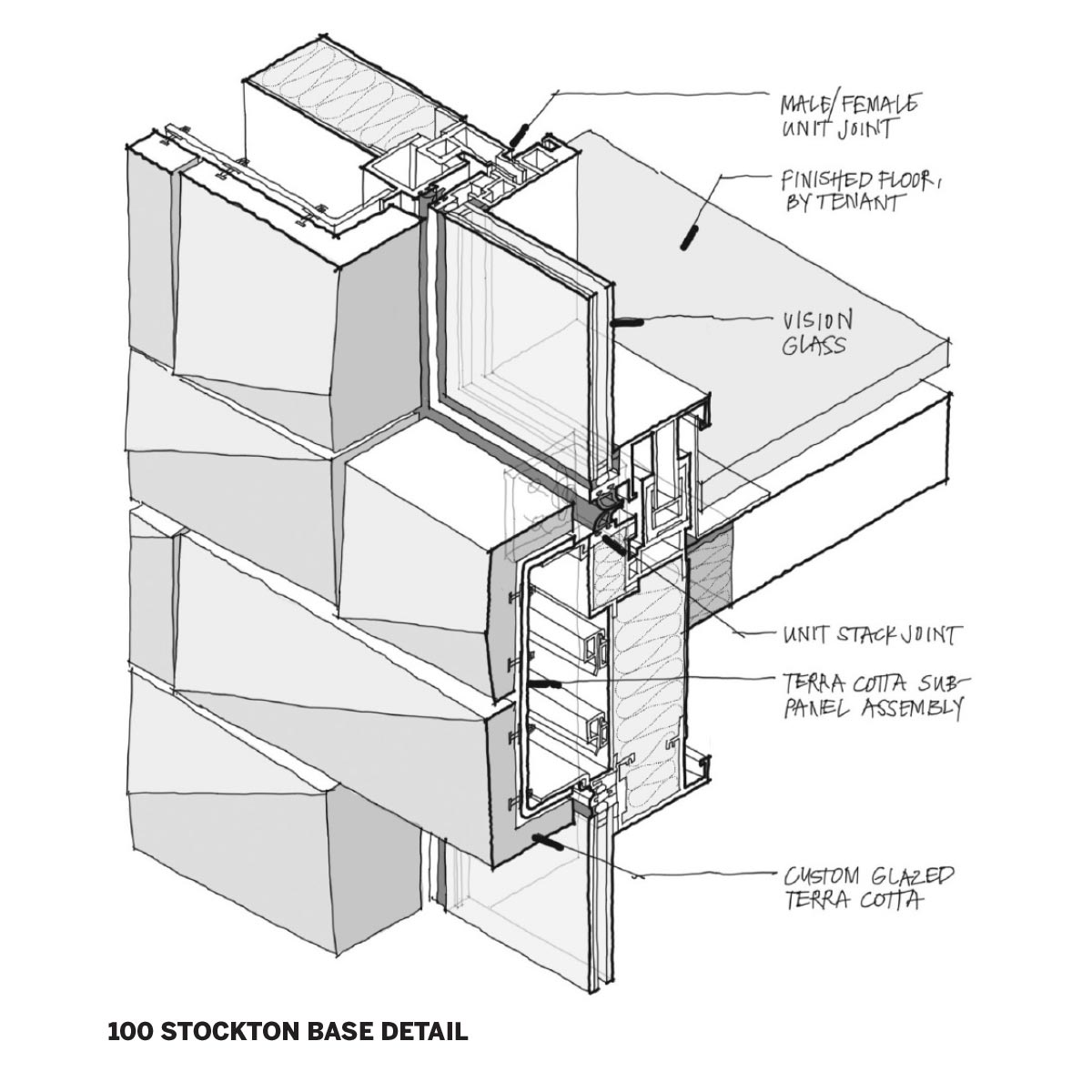
Image courtesy of Gensler
100 Stockton base detail
Three recent recladding projects exemplify this trend. A Gensler-designed overhaul of 100 Stockton, in San Francisco, has enabled a former department store to find new life as a multi-tenant building. KPF’s reskinning of 660 Fifth, in New York, has repositioned a flagging office tower as Class A space. And Snow Kreilich’s modernization of the Arthur J. Altmeyer Federal Building, in Woodlawn, Maryland (in collaboration with HGA), has transformed a miserable midcentury office block into a comfortable and desirable workplace.
San Francisco’s historic Union Square district has been troubled recently with a dramatic exodus of retailers, declining foot traffic, and rising crime, but the overhaul of 100 Stockton is one of a number of hopeful new signs for the area. Built in 1974 with blank exterior walls and a small central atrium for escalators, the former department store “really didn’t have an intentional relationship to the sidewalk, to the streetscape, to its context,” says Bob Perry, a design director in Gensler’s Bay Area practice. Tasked with transforming the seven-story single-tenant premises into a property that would be flexible and adaptable to multiple uses and tenants—what Perry calls “a sort of Swiss Army knife of leasing”—the designers aimed to provide “a base chassis” for the retail, office, and food-and-beverage market of the future.
Working from the inside out, the design team developed a scheme to provide upper-story retailers with the ground-floor presence and designated elevators they’d need to succeed. That scheme then informed the rhythm of a transparent new facade for the building. Prioritizing contextual fit (mandated by municipal design guidelines), the facade design takes as its parti the organization that many of 100 Stockton’s historic neighbors share—a base, a middle, and a tower, often topped with a crown element—and interprets these in a contemporary idiom. Most dramatically, the middle element, which in neighboring buildings typically comprises a band of facade articulation, is recessed to create a terrace along each of the corner building’s two street faces. Above the terrace, the building envelope lifts at an angle (supported on a new horizontal truss that transfers wind loads back into the main structure), making a dynamic gesture of opening toward the street corner. This occupiable component of the facade offers building users a fresh vantage point on the district, and at the same time signals the building’s new vitality to passersby.
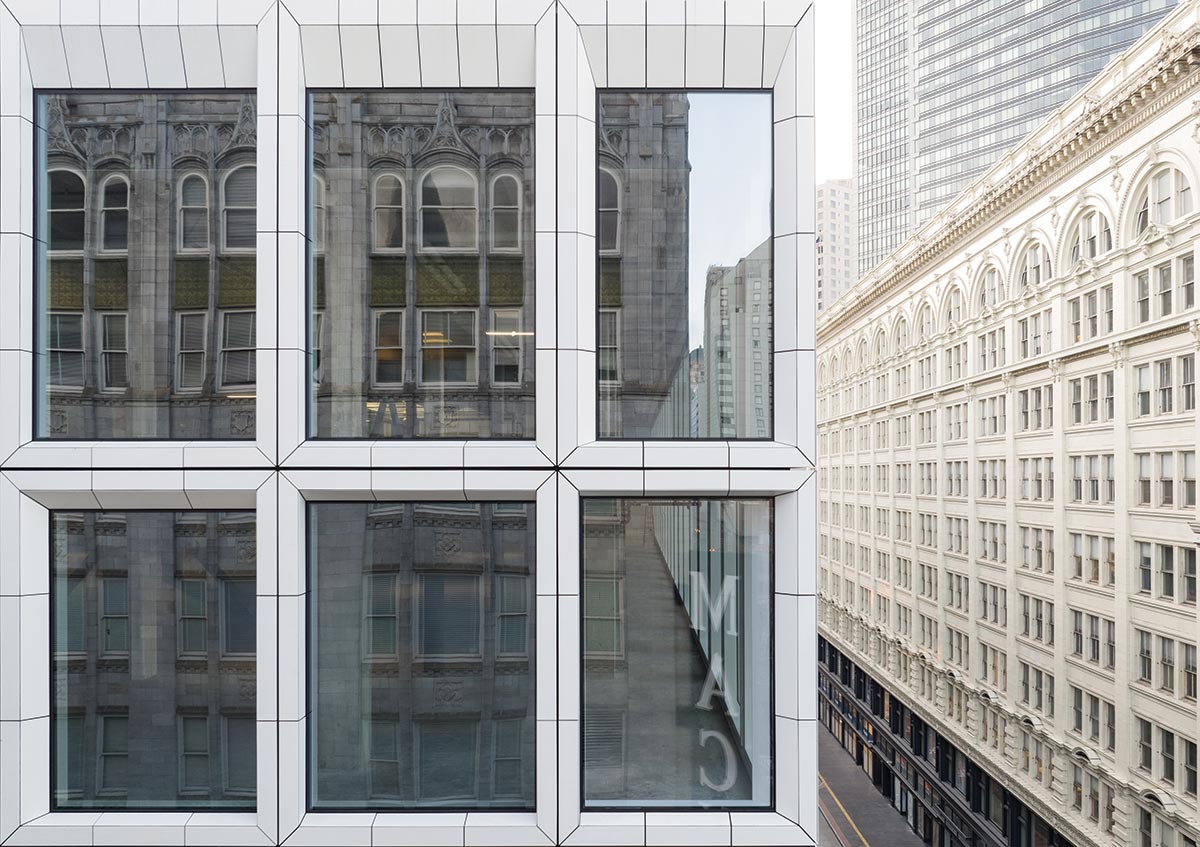
PHOTOGRAPHY: © JASON O’REAR
As part of a unitized curtain wall with generous glazing, the upper section of 100 Stockton is clad in extruded terra-cotta tiles with compound miter-cut frames.
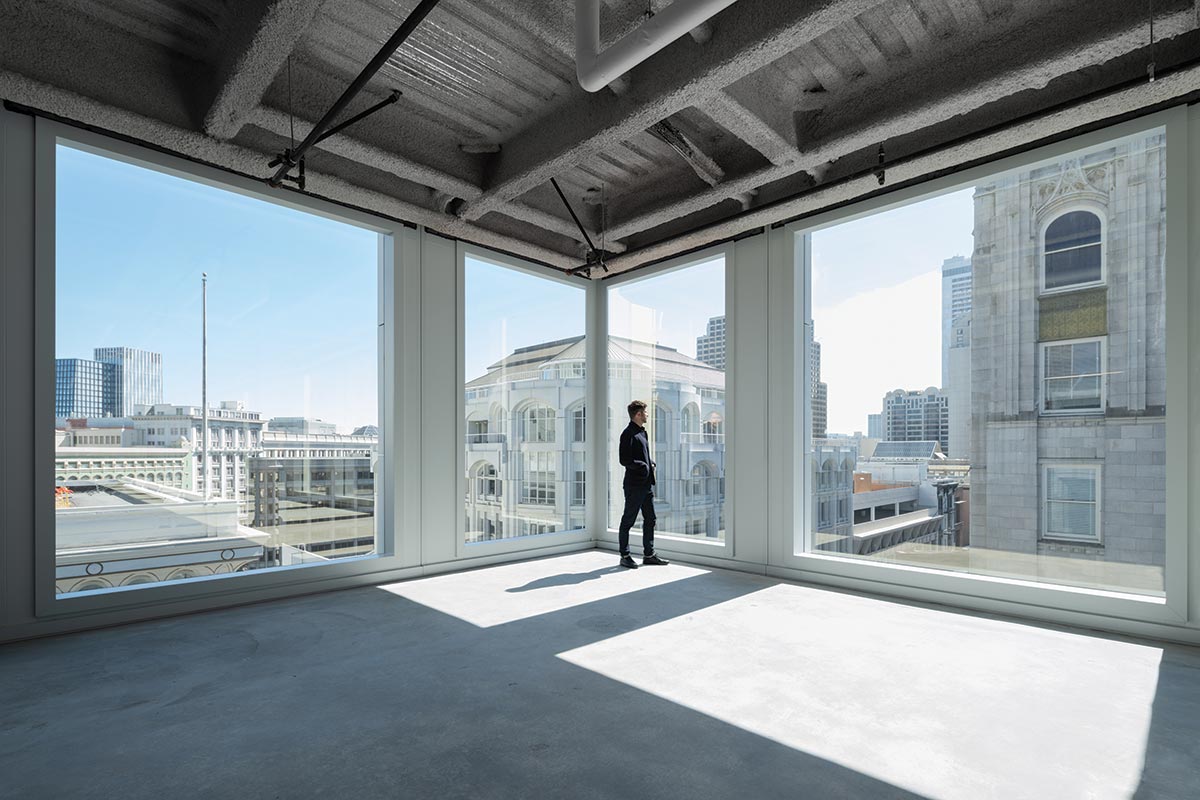
PHOTOGRAPHY: © JASON O’REAR
Just as a careful analysis of neighboring buildings informed the facade’s composition, a survey of the historic district’s materials—light colors, glazed terra-cotta, stone—informed its palette. The frame is clad in light gray terra-cotta tiles, but with some contemporary twists on the classic material. On the building’s base, a traditional running bond pattern has been vertically stretched and scaled so that tile units become larger as they go higher; for ease of fabrication and assembly, tiles have been slip-cast as large panels, their edges stepped so that joints feather into the pattern and mask the regular unitized construction joints behind the terra-cotta rainscreen. Taking advantage of the malleability of clay, tile faces have been faceted along the diagonal, with the result that they catch the city’s dynamic and atmospheric light. The upper section of the building is also clad in glazed terra-cotta, this time using extruded tiles, compound miter-cut and assembled into frames, which are then attached to a unitized curtain wall, and lifted into place. “It’s a really intelligent use of the process in an unconventional way to meet the needs of the design intent,” says Karen Brandt, a senior principal with Heintges Consulting Architects & Engineers, facade consultants on the project.
Perry reports that the success of tenants so far—a restaurant that opened last year, occupying 10,000 newly constructed square feet on the rooftop, is fully booked weeks in advance; a workplace, meeting, and event host has taken two floors—is bringing foot traffic to the district, and there’s brisk interest from additional prospective tenants.
















